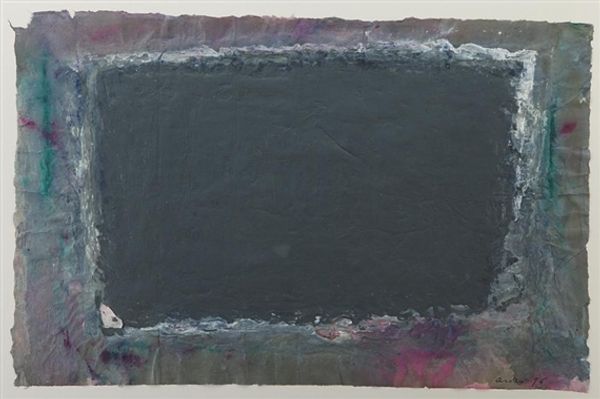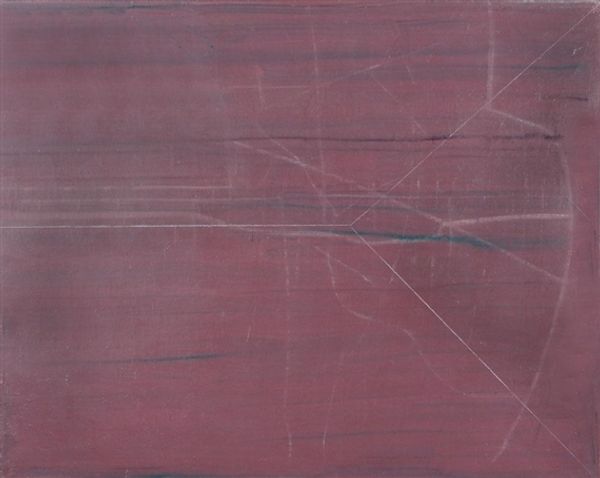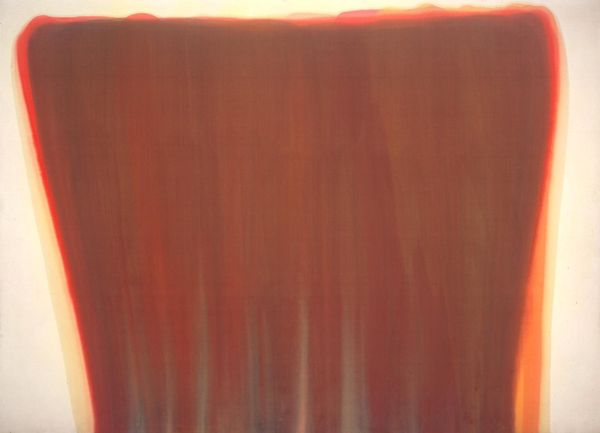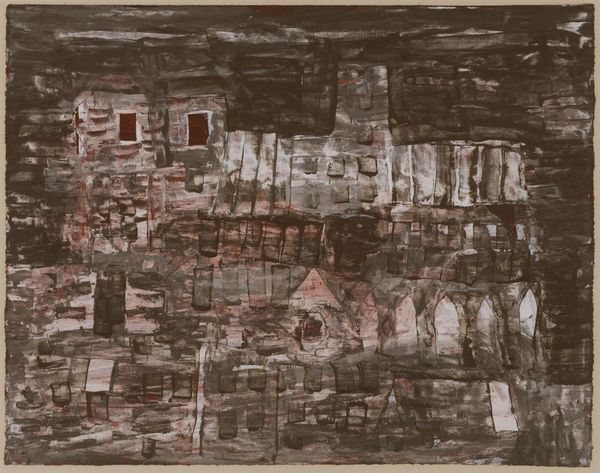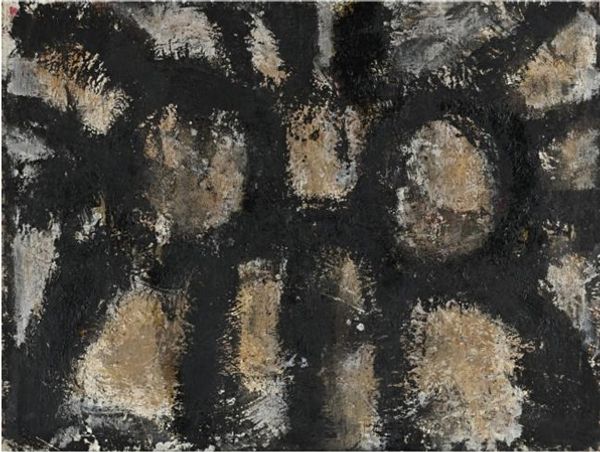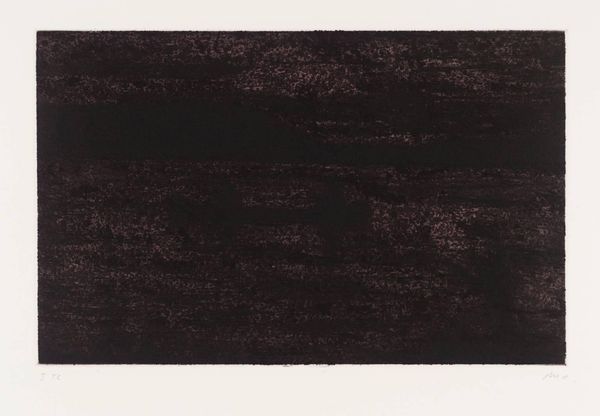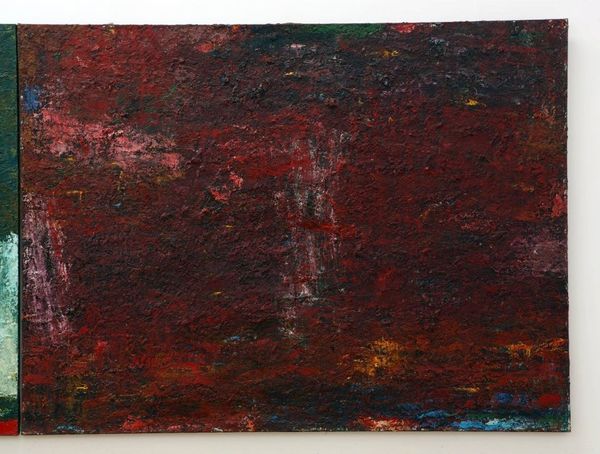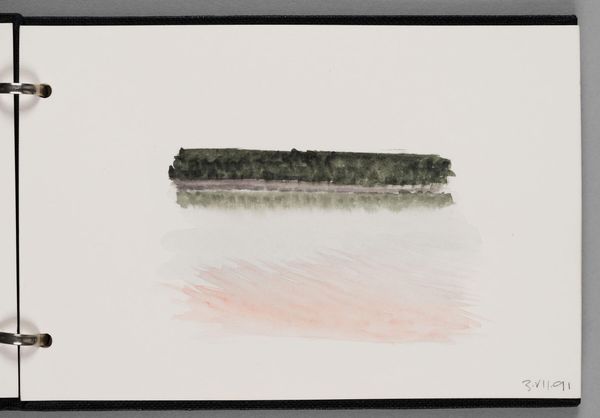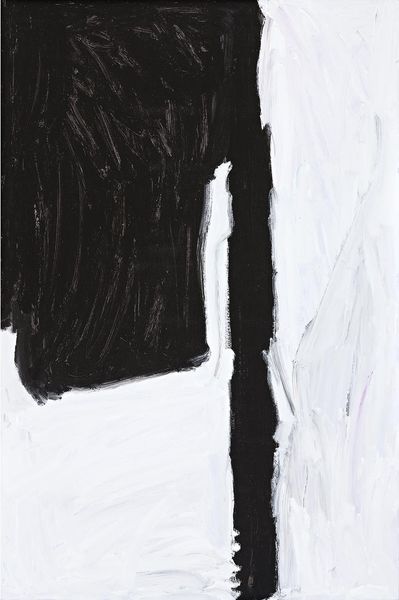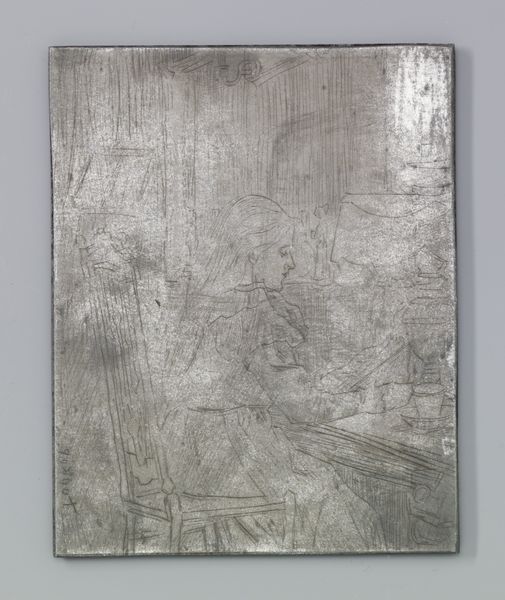
#
natural stone pattern
#
abstract expressionism
#
abstract painting
#
possibly oil pastel
#
carved into stone
#
rectangle
#
paint stroke
#
abstract art
#
natural texture
#
organic texture
#
watercolor
Copyright: Tiberiy Szilvashi,Fair Use
Curator: Here we have an Untitled work by Tiberiy Szilvashi, created in 2012. Editor: Oh, right away I’m getting a sense of raw texture, like distressed wood or maybe a rain-streaked window on a very gloomy day. Curator: I can see that. It appears to me that Szilvashi built up layers of paint—perhaps oil or pastel—to achieve that tactile quality. The process is front and center here; the accumulation feels crucial to the work's effect. Editor: Absolutely. I'm thinking about how that build-up parallels the build-up of culture itself: the residue of human activity accumulating over time to transform what we see around us. It challenges the idea of a singular author, a divine creator. Instead, we get to see the evidence of work. Curator: I appreciate your point about authorship; the materiality really subverts any singular narrative. But at the same time, the way the strokes fall—vertically, almost like rain—gives it a kind of mournful beauty, doesn't it? I can't help but find an elegiac quality, perhaps even meditative depth despite the seemingly limited color range. Editor: That limited range—the grays, browns, off-whites—pushes us to think about the very basics, the elemental substances that shape our world. Maybe that's part of the meditative feeling? Considering stone, pigment, and the hand moving those things across a surface? There is labor there—both intellectual and manual. Curator: Labor made visible, definitely. What I love about Szilvashi's approach is that he makes visible both the traces of the artist's hand and the transformative power of time, reminding me of palimpsests—those ancient manuscripts that are written over and over again, layer upon layer. Editor: It’s a nice metaphor for artistic processes—like an archaeology of making, really. How can art recover what is being destroyed in our culture of relentless, disposable commodities? I mean, paint isn’t especially durable when compared to stone but painting *pictures* of stones… that creates some odd questions. Curator: It is almost like asking what our marks, and ultimately what survives us and, most importantly, *why*. It’s hard not to fall into rumination after this. Editor: Right! Maybe the point isn't answers, but an acknowledgement of materials, of work, of the world that constantly constitutes us—materially, artistically, even spiritually.
Comments
No comments
Be the first to comment and join the conversation on the ultimate creative platform.
